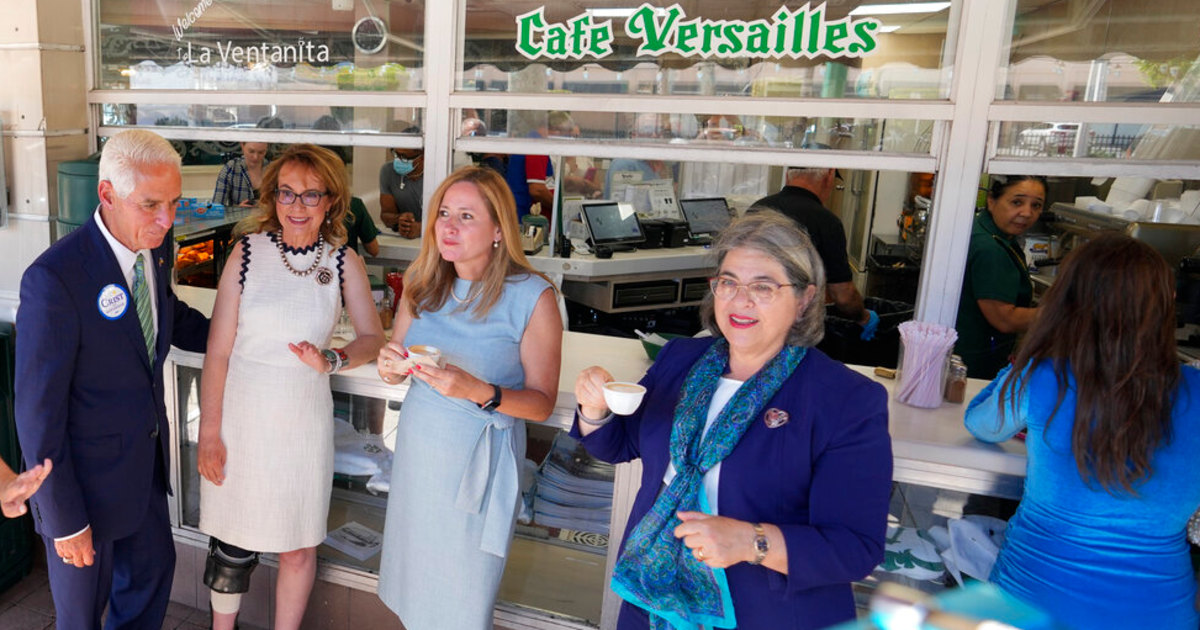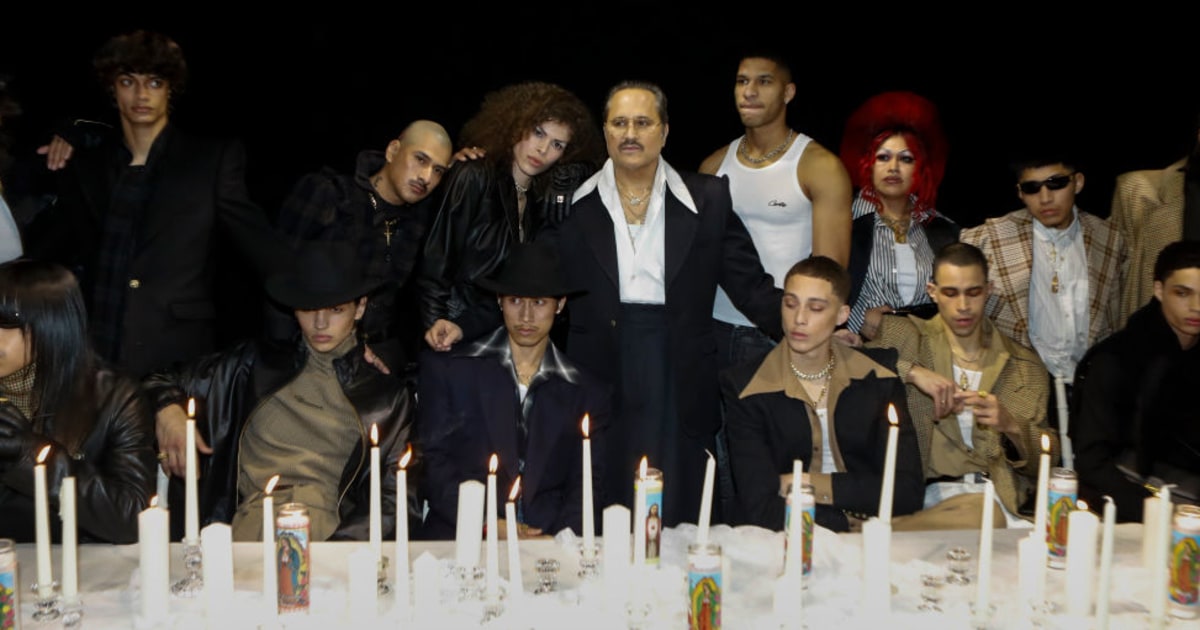Welcome to Axios Latino, a newsletter to tell you every Tuesday and Thursday the stories that have a special impact on Latino communities in the United States and in Latin America. If you are interested in subscribing and receiving the newsletter in your email (
in English
), you can do so
by clicking here
.
You will always find it in Spanish on Noticias Telemundo.
1 topic to highlight: Latinos in the world of tattoos
Latino tattoo artists and studio owners
are fueling the rapid growth of this industry, which has not slowed despite the coronavirus pandemic.
Why it matters
: It is a booming industry that generates more than a billion dollars a year in the United States alone.
And its popularity continues to grow, with estimates that its market will increase by 23% this year, especially thanks to Instagram and other social networks.
Tattoo artist Andy 'Kedavra' Rodrigues at his studio, Chupacabra Tattoo, in New York. J.
Conrad Williams, Jr./Newsday RM via Getty Images
More details
: The number of Latino tattoo artists has risen since 2015, and they now represent 21% of the total in the United States, the second-largest group after non-Hispanic whites, according to demographic data compiled by job site Zippia.
Many are in high demand, with thousands of followers on social media.
Freddy Negrete, a tattoo pioneer known for creating shadowed black and gray designs to inaugurate the so-called Chicano style, is among the most well-known Latinos.
The Latin tattoo varies in styles and colors, from fine lines to florals, and with various artists incorporating their indigenous roots with designs that emulate Otomí, Mapuche or Huichol art.
Notable fact
: A 2019 Ipsos survey found that 30% of citizens in the United States have at least one tattoo, and 36% of non-white respondents said they were inked (the survey did not include an ethnic or racial breakdown) .
Almost none said they regret their tattoos.
The background
: Tattoos were controversial for many years, believed to be signs of gang affiliation or signs of past crimes, especially among Latinos and Blacks.
But they are becoming more accepted, in part through celebrities and athletes openly displaying their own, tattoo artist Nikko Hurtado told Radar Telemundo.
Even companies that were strict with their dress codes, like Disney, where 27% of workers are Hispanic, have changed their policies and now allow workers to have visible tattoos.
Yes, but
: Latino immigrants and asylum seekers are still sometimes discriminated against and accused of being gang members solely for having tattoos, regardless of what images those tattoos contain.
That stigma has also made tattoo removal popular among Latinos, especially for those who were part of gangs (as they often have tattoos on their faces or hands that refer to the group they were part of), or for Latinas who were branded at some point for being victims of sex trafficking.
Gang intervention organizations and job training programs for gang members also offer tattoo removal services.
There are also groups that offer free cover-ups.
2. Too long before screens
Latino and black children spent more time
in front of a screen than their white peers during the first year of the pandemic, but not necessarily for educational purposes, according to a study published by the scientific journal JAMA Pediatrics.
Why it matters
: The study points out how increased exposure to screen time could continue to affect Latino and black children, especially as the omicron variant generates fears of new closings or that schools will return to virtual classes, which would fewer non-screen related activities.
Spending more time in front of a screen has been associated with weight gain, "greater exposure to food advertisements" and overeating, as well as increased stress, according to the study.
Those factors could worsen the medium- and long-term health of Latino and black children, who already face systemic health barriers, such as having lower rates of health insurance, higher rates of obesity, and less access to preventive medicine.
A program for virtual classes that includes break times used in Miami in the first months of 2020.Jayme Gershen / Bloomberg via Getty Images
More information
: Screen time for non-educational purposes doubled for tweens and teens in the United States, going from an average of 3.8 hours a day before the pandemic to 7.7 hours a day, according to the study.
That daily average was considerably higher for black and Hispanic children, who logged about 10 and 8.7 hours of non-educational screen time, respectively.
The authors of the study suggest that these higher figures could be due to a "lack of economic resources to carry out other types of activities or the lack of access to safe outdoor spaces."
Non-Hispanic white and Asian children averaged 6.8 hours.
Most of that screen time was spent playing videos, video games, and browsing the web.
A study links increased myopia in children to the pandemic
Aug. 4, 202101: 37
In Context
: While non-educational screen time increased for both groups, many Black and Latino children also suffered educational setbacks due to lack of Internet connectivity and not having access to computers and tablets for online classes during the pandemic.
3. Latinos turn more to temporary jobs with digital platforms
Nearly a third of Latinos surveyed
have opted for jobs as drivers, delivering or grocery shopping for others, far more than other demographics have done, according to a report by the Pew Research Center.
Baidi Wang / Axios
Why it matters
: Contractor-type employees or mobile-app-based jobs are at higher risk of exposure to COVID-19, plus those drivers or delivery men tend to be underpaid and don't usually receive benefits like health insurance .
More details
: Latinos and black workers also often have two or more types of temporary jobs at the same time.
59% of non-white rig workers surveyed by Pew said they were concerned about contracting coronavirus because of their jobs, compared with 38% of non-Hispanic white temp workers.
Although the majority of temporary workers surveyed by Pew said that, overall, their experience with mobile-based work has been positive.
Yes, but
: 72% of Latinos in the United States who perform contract and temporary jobs prefer a permanent job if it were available to them, the highest number among the population groups surveyed by McKinsey in 2021.
These workers were also nearly twice as likely to say they couldn't afford health insurance than other non-Hispanic temporary workers.
4. Goodbye, corn;
hello marijuana
Indigenous communities in Oaxaca
, Mexico, are replacing corn crops with cannabis crops in anticipation of the legalization of marijuana in the country.
What's happening
: A dozen communities in the mountains formed the collective Asociación de Indígenas Productores de Cannabis, and are in the process of obtaining their cultivation permits.
They plan to use the derivatives of the plant to sell medicinal CBD products, food dishes flavored with cannabis seeds and hemp fibers for clothing.
A decision by Mexico's Supreme Court last year relaxed the rules for obtaining legal licenses for the cultivation of medicinal cannabis.
The Chamber of Deputies also approved a national bill that would also decriminalize cannabis for recreational purposes.
A vote in the Senate is expected for the legislative period that begins in February.
The indigenous peasants of Oaxaca changed the planting of corn for the cultivation of marijuana
Jan. 3, 202201: 43
The Big Picture
: Oaxacan growers say there is an indigenous claim to growing cannabis themselves and making a profit outright.
The highlands of Oaxaca and Guerrero have been exploited for many years by drug trafficking organizations, forcing local residents to grow drugs for themselves and to collect poppies for heroin sold in the United States.
This created a stigma against the indigenous peoples who cultivated marijuana, despite the fact that there are historical records that the native groups of Mexico had been cultivating it for traditional and medicinal purposes since the 16th century.
The group hopes that obtaining the permits will also create legal job opportunities, so that fewer Oaxacans feel they must emigrate north.
5. Stories we are following
The Peruvian nation's prosecutor
opened
an initial investigation
against President Pedro Castillo on Tuesday, alleging that the president committed "improper intervention."
Castillo is being accused of trying to influence negotiations for the construction of a bridge in favor of a businesswoman.
The president who took office in July 2020 denies the allegations.
Only in December did Castillo survive an attempt to impeach him.
Castillo, in a speech to the UN in 2021.Mary Altaffer via Getty Images
Nicaragua has just established its first Chinese embassy
since 1990, after Daniel Ortega withdrew diplomatic recognition from Taiwan in December (which claims to be an independent nation while China considers it part of its territory).
Ortega's rapprochement with China is being seen as an attempt to protect Nicaragua from the damage of the United States sanctions against his government for its repression of protests and manipulation of electoral processes.
China has been strengthening its ties with Latin American countries in the past decade through investment and infrastructure.
6. 🥔 A potato that shines like gold
The humble potato has been turned into a work of art by the Colombian Ernesto Restrepo Morillo.
He even sold one of his creations for $ 30,000.
A Colombian artist sold a gold Creole potato for $ 30,000
Dec. 2, 202103: 09
Details
: Restrepo says he began making bronze, ceramic and even gold sculptures that emulate the tuber to highlight its importance as a staple food.
"I did them a bit thinking about how they were done here in Latin America, to perform certain rituals, to celebrate the earth," Restrepo told Noticias Telemundo.
The artist uses various materials to make products that look identical to the potato;
It also makes jewelry and sack-shaped cushions.
Thanks for reading, we will be back on Tuesday.
Do you want to see any of the most recent previous editions?
The Latinx debate grows
This is how Hispanics made the first Christmases in America
The Mexican behind Snoopy
The effects of the wage gap
Remember school segregation
The worst fears for 2022















